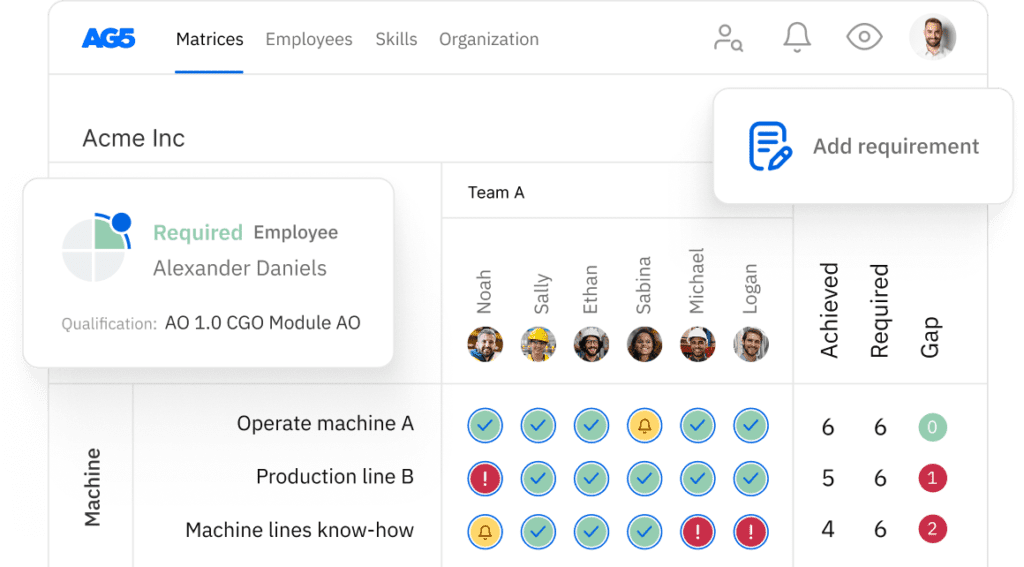ISO 14040: Life Cycle Assessments
ISO 14040 is part of the ISO 14000 series of environmental management standards developed by the International Organization for Standardization (ISO). In this guide, we will explore the key aspects of ISO 14040, including its significance, the steps required to implement the standard, the benefits of implementation, and more.

What is ISO 14040? Copied
ISO 14040 is an international standard that provides guidelines for conducting life cycle assessments (LCAs) of products, processes, or systems. It outlines the four main phases of an LCA: goal and scope definition, life cycle inventory analysis, life cycle impact assessment, and interpretation.
Who needs to be certified in ISO 14040? Copied
ISO 14040 is not a certification standard. It is a set of guidelines for conducting LCAs and is primarily used by organizations or individuals involved in environmental assessment and management to analyze and improve the environmental performance of products, processes, or systems. Organizations may choose to adopt and implement ISO 14040 if they want to assess and improve their environmental performance.
What are the benefits of implementing ISO 14040? Copied
The benefits of implementing the ISO 14040 standard include the following:
Improved environmental performance
ISO 14040 helps organizations identify and understand the environmental impacts associated with their products, processes, or systems throughout their life cycle. This enables them to make informed decisions and implement strategies for reducing those impacts, leading to improved environmental performance.
Enhanced sustainability and resource efficiency
By conducting LCAs, organizations can identify opportunities for optimizing resource use, reducing waste, and improving energy efficiency. This can result in cost savings, conservation of resources, and a more sustainable approach to operations.
Stakeholder trust and credibility
Adopting ISO 14040 demonstrates a commitment to environmental responsibility and transparent reporting. It can enhance the credibility and trust of stakeholders, including customers, regulators, investors, and the public, who increasingly value and prioritize sustainability practices.
How to get certified in ISO 14040 Copied
As it is not a certification, organizations cannot be certified in ISO 14040. However, they can pursue certification under other standards in the ISO 14000 series, such as ISO 14001, which is a widely recognized certification for environmental management systems.
Implementing ISO 14040 within an organization, however, involves a systematic approach – even if certification is not possible. The first step is to form an environmental management team, tasked with assessing the organization’s current environmental impact and establishing objectives and targets. This team then develops a comprehensive implementation plan, focusing on reducing environmental impacts through employee training, the implementation of procedures, and regular monitoring. Continuous improvement, audits, and stakeholder engagement are also vital components to maintaining ISO 14040 compliance and promoting sustainable practices.
What are the challenges in implementing ISO 14040? Copied
Below are several of the challenges organizations commonly face when implementing ISO 14040:
Data availability and quality
Gathering comprehensive and accurate data throughout the entire life cycle of a product, process, or system can be challenging. Additionally, obtaining data from various suppliers, managing different data formats, and ensuring the reliability and relevance of the data can require significant effort and resources.
Complexity and expertise requirements
Conducting a thorough LCA requires expertise in environmental science, data analysis, and LCA methodology. It can be complex to navigate the various stages of an LCA, interpret results, and make informed decisions based on the findings. Organizations may need to invest in training or hire external experts to ensure proper implementation.
Boundaries and system boundaries
Defining the scope and boundaries of an LCA can be challenging. Determining which life cycle stages, processes, or impacts to include or exclude can impact the results and comparability of assessments. Making consistent and well-informed decisions about system boundaries can be a complex task, requiring careful consideration of functional units and relevant environmental impacts.
What are tips and strategies for preparing for ISO 14040 implementation? Copied
Here are a few tips for preparing for the implementation of ISO 14040:
- Familiarize yourself with ISO 14040 and its four phases of LCA
- Define clear goals, scope, and environmental impacts to be assessed
- Develop expertise in LCA methodology and data analysis
- Establish a systematic data collection process and ensure data reliability
- Engage stakeholders and consider external expertise for guidance and support
What are the renewal requirements for ISO 14040? Copied
As ISO 14040 is a guideline for conducting LCAs and not a certification standard, there are no specific renewal requirements for ISO 14040 itself. However, if an organization has obtained ISO 14001 certification, which focuses on environmental management systems, the certification typically needs to be renewed periodically.
What are resources for ISO 14040 implementation? Copied
For more information and guidance on ISO 14040, you can refer to the following resources.
International Organization for Standardization (ISO). The ISO 14040 page on the official ISO website provides the ISO 14001 standard document, news updates, and additional resources.
Industry associations. Industry associations, such as those related to sustainability, environmental management, or specific sectors, may provide resources, guidance, and networking opportunities related to ISO 14040. Reputable associations in this area include the Institute of Environmental Management and Assessment (IEMA) and the Environmental and Energy Study Institute (EESI).
Skills management Copied
Skills management for ISO 14040
AG5 stores all certifications in the cloud, providing all authorized personnel with access to the right version of approved certifications. This helps you easily keep track of all data and documentation related to implementing ISO 14040 across your organization.
Using AG5’s skills management software, you can monitor the status of any type of certification that is relevant to your workforce, leveraging intuitive dashboards that provide you with a clear understanding of exactly what is needed to keep your employees skilled and safe.
FAQs about ISO 14040 Copied
-
What is the scope of ISO 14040?
-
Is implementing ISO 14040 mandatory?
-
How long does it take to implement ISO 14040?
-
What are the cost considerations for ISO 14040 implementation?
-
What is the validity period of ISO 14040?
-
Can ISO 14040 be integrated with other management systems?
-
How can you learn more about ISO 14040?
Author Copied
Revisions Copied
Tired of managing skills in Excel?
Say goodbye to Excel matrices. Start using AG5’s plug and play skill matrix software.
Recognized by G2 for Excellence in Skills Management

